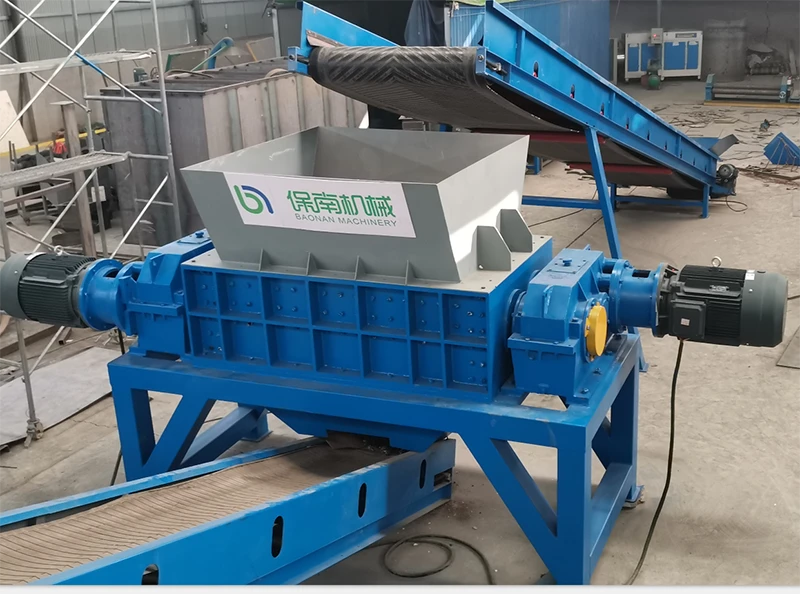

lis . 10, 2024 10:07 Back to list
Homemade Copper Wire Granulator A Smart DIY Project for Recycling
In today's world, recycling is becoming increasingly essential as we strive to reduce waste and conserve valuable resources. One effective way to recycle copper is by using a copper wire granulator. While commercial granulators can be quite expensive, creating a homemade copper wire granulator allows you to save money while contributing to sustainable practices. This article will guide you through the benefits of copper wire granulation, the materials needed for a homemade granulator, and a basic overview of the construction process.
The Importance of Copper Recycling
Copper is a highly sought-after metal due to its excellent conductivity and resistance to corrosion. It is widely used in electrical wiring, plumbing, and various electronic devices. As technology advances, the demand for copper continues to rise, making it crucial to recycle scrap copper efficiently. Recycling copper not only conserves the earth’s finite resources but also requires less energy than extracting and refining new copper.
By recycling copper wire, you help minimize environmental impact while potentially earning money from selling the granulated copper. A homemade copper wire granulator is a practical solution for anyone dealing with a substantial amount of scrap copper wiring, whether from old electronics, construction leftovers, or DIY projects.
Materials Needed
Before embarking on your DIY project, you will need a few materials
1. Electric Motor A powerful electric motor is essential to drive the granulator’s blades. An old lawnmower or treadmill motor can work effectively. 2. Housing A strong, sturdy box or frame, usually made of steel or wood, will serve as the main body of your granulator.
3. Blades High-quality steel blades, either purchased or made from old saw blades, to cut and crush the wire.
4. Sieve A screen or sieve for separating the copper granules from the insulation.
5. Power Supply Ensure you have a suitable power source for your motor, along with necessary wiring and switches.

Construction Process
Building a homemade copper wire granulator can be both a fun and challenging project. Here is a simplified version of the process
1. Design and Planning Before diving into construction, sketch out your design. Consider the dimensions of your granulator, where the motor will be placed, and how the wire will enter and exit the unit.
2. Building the Frame Construct a sturdy frame using steel or wood. Make sure it can withstand vibrations without falling apart. Attach the electric motor securely to the frame.
3. Installing the Blades Position the blades inside the housing. Make sure they are sharp and can spin freely when the motor is activated. The blades need to be able to crush the wire into smaller pieces efficiently.
4. Adding the Sieve Below the cutting area, attach your sieve. This component will allow the granules to fall through while capturing the insulation, preventing it from mixing with the copper.
5. Wiring the Motor Connect the motor to the power supply. Ensure all connections are insulated and secure to avoid electric shock or short circuits.
6. Safety Checks Before running your granulator, double-check that everything is secured properly and that your protective gear is on.
Final Steps and Usage
Once your homemade copper wire granulator is complete, you can begin using it to process scrap copper wire. Feed the wire into the granulator, and the machine will efficiently separate the copper from its insulation. Collect the granulated copper, which can then be sold for recycling, providing you with some extra cash.
Conclusion
A homemade copper wire granulator is an excellent project for anyone interested in recycling and sustainability. Not only does it help you manage scrap copper more effectively, but it also fosters a sense of ingenuity and resourcefulness. By taking on this DIY challenge, you contribute to the environment and create a valuable tool for future recycling efforts. With a bit of time, effort, and creativity, you’ll have a functional granulator that can keep you engaged in the important mission of recycling copper.
Latest news
Troubleshooting Common Eddy Separator Problems
NewsJul.04,2025
The Role of Metal Recycling Plants in Circular Economy
NewsJul.04,2025
The Impact of Recycling Line Pickers on Waste Management Costs
NewsJul.04,2025
Safety Features Every Metal Shredder Should Have
NewsJul.04,2025
How Industrial Shredders Improve Waste Management Systems
NewsJul.04,2025
How Cable Granulators Contribute to Sustainable Recycling
NewsJul.04,2025